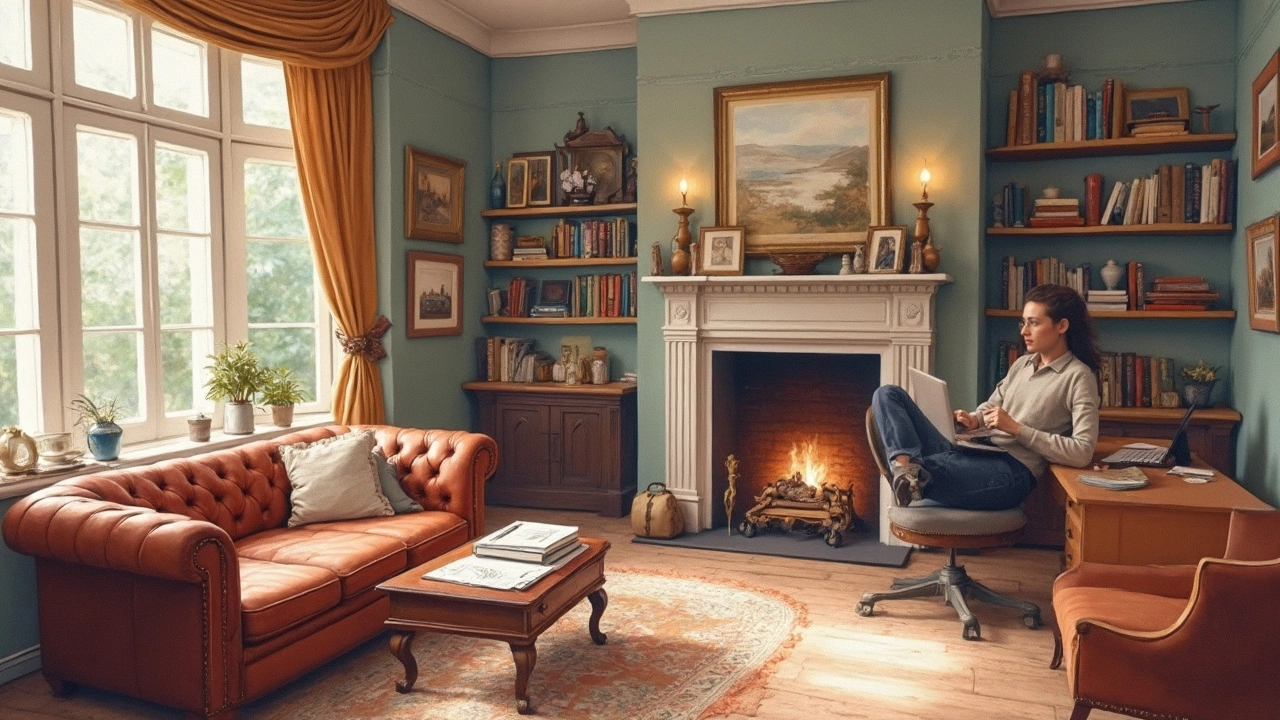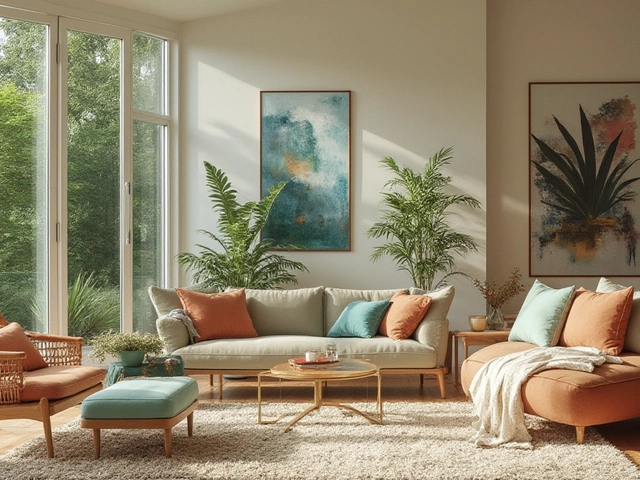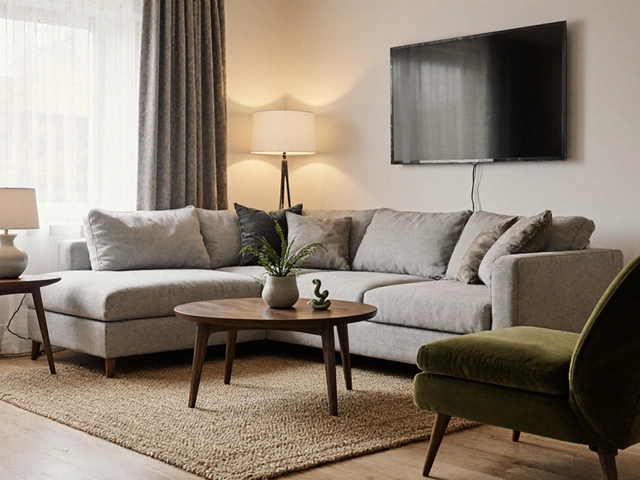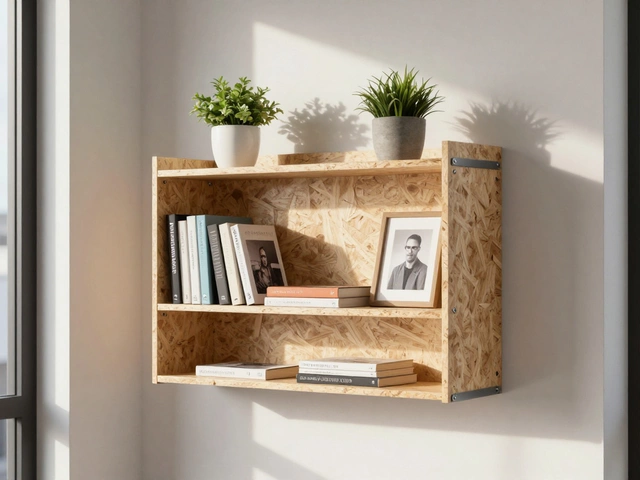Buying furniture can feel like a daunting task, especially when deciding how to pay for it. Do you go for the flashy finance plan or stick to cash? Well, it heavily depends on your financial situation and goals. Let's dive into this topic and find the smartest way to make that purchase.
First off, understanding your budget is key. You don't want to fall in love with a designer sofa only to realize it's way out of your league. Be honest about what you can afford. It's not just about the price tag; consider delivery fees, taxes, and other extras that might catch you off guard.
Some folks swear by paying cash, and honestly, it can save you from interest piling up. The downside? It requires upfront savings, and not everyone's got a furniture-sized piggy bank waiting around. If you've got the funds, it's a straightforward option that avoids getting tangled with debts.
On the flip side, financing options open up the possibility of enjoying your new furnishings now and paying over time. Store credit cards often offer enticing no-interest periods, but beware – miss a payment, and those interest rates can skyrocket. It's crucial to read the fine print and understand what's at stake.
- Understanding Your Budget
- Paying Cash: Pros and Cons
- Financing Options and Interest Rates
- Rent-to-Own: Is It Worth It?
- Smart Tips for Bargain Hunters
Understanding Your Budget
Before you even step into a furniture store or start browsing online, it's crucial to determine your budget. Knowing how much you can afford makes it easier to narrow down options and avoid falling in love with pieces that are out of reach. Here's how you can get started.
Step 1: Assess Your Current Finances
Take a good look at your monthly expenses. Begin by listing out everything from bills, groceries, and entertainment costs. Don't forget the smaller expenses like coffee trips or those streaming service subscriptions. Once you have a clear picture, calculate how much disposable income is left each month.
Step 2: Prioritize Your Furniture Needs
Not all furniture needs are created equal. Is your current couch sagging beyond repair? Or maybe you've just moved and have nothing to sit on? Prioritize essentials over nice-to-haves. Create a list that ranks furniture items by necessity to guide your spending decisions.
Step 3: Set a Realistic Budget
Based on your disposable income and priorities, set a clear budget range. Remember to factor in hidden costs associated with buying furniture, like delivery fees and taxes. It's often advised to keep furniture expenses below 10-15% of your annual income to maintain financial health.
Consider Future Financial Changes
Think about any potential financial changes on the horizon, like a new job, family expansion, or home renovation. These may impact how much you're willing to shell out on buying furniture now. Planning ahead can prevent unwanted stress down the road.
By taking these steps, you're not just throwing a random number at your furniture budget but making an informed decision that fits comfortably within your means. It's all about balancing your current needs with long-term financial health.
Paying Cash: Pros and Cons
Paying cash for your new furniture purchase seems pretty straightforward, right? You take out your wallet, hand over the money, and boom – you own that cozy couch without worrying about future bills. But, like everything else, it's got its ups and downs.
No Interest, No Hassles
The most obvious perk? No interest! Unlike financing where you might be caught with surprise interest rates later, paying cash keeps things simple. You're only paying the price tag that's in front of you. Money expert Dave Ramsey says it best:
“Debt is not a tool; it is a method to make banks wealthy, not you.”
No debts mean peace of mind. You won't find yourself dreading an upcoming furniture bill or risking your credit score if things go south.
Takes Commitment
On the flip side, having that kind of cash requires serious saving. Not everyone has stacks of money lying around for that dream dining table. Saving up could mean waiting a bit longer to furnish your home if you’re building that stash a little every month. It takes discipline and cuts out impulse buys totally out of the equation.
Opportunity Costs
Lastly, ever heard of opportunity cost? Think about what else you could do with that money. Could it earn you interest if invested elsewhere, or get you through an unexpected expense? Paying cash means your money’s tied up in furniture instead.
Summary
If you’ve got the cash and love the idea of owning your furniture outright, go for it. Just be sure you’re not emptying your emergency fund or missing out on other financial opportunities. Remember, it’s all about balancing your priorities and picking the method that works best for your situation.

Financing Options and Interest Rates
When you're looking at furniture purchase options, financing can help take the sting out of dropping a big chunk of change all at once. But it pays to understand the different options out there and the interest rates they tag along.
Store Credit Cards
Many furniture stores roll out the red carpet with flashy 0% interest for a set period. Sounds great, right? Well, tread carefully. Those generous terms usually come with a catch. If you miss a payment or don’t clear the balance before the promotion ends, you might find yourself saddled with hefty interest going back to day one.
Here's a tip: Always note the length of the no-interest period and make sure you can pay off the amount in that time. Treat it like a challenge you don't want to lose.
Personal Loans
Thinking of another option? Banks or credit unions might offer personal loans with fixed interest rates. It’s a steady approach — you'll know exactly how much you're up for every month, making budgeting a little easier. However, getting approved might take a solid credit score, and penalties could apply for early repayment.
Buy Now, Pay Later (BNPL)
This method is gaining traction for furniture shoppers, breaking the total into bite-sized monthly payments. Just like with any credit purchase, late fees and interest can sneak in, so it's crucial to keep track of those payment dates.
Comparing Your Options
Here's a quick look at some typical interest rates:
| Financing Option | Interest Rate |
|---|---|
| Store Credit Card (after promo) | 20% - 29% |
| Personal Loan | 5% - 15% |
| Buy Now, Pay Later | Varies (often 0% if on time) |
- Tip: Check your credit score. Good credit often means better interest rates.
- Read the fine print on your credit agreements as different policies might apply.
- Factor in the total cost, not just monthly payments. Sometimes a lower monthly amount hides a higher total cost due to interest.
Being smart about the way you finance can save you major bucks in the long run. So, whether you’re eyeing that modern love seat or a dinner table set... choose the best financial method that aligns with your lifestyle and pocket.
Rent-to-Own: Is It Worth It?
Alright, let's talk about the rent-to-own option. It's tempting, especially when you want that stylish couch without a hefty price upfront. But is it a smart move? Let's break it down.
First, rent-to-own offers flexibility, and there's no doubt about it. You don't need to have a chunk of change ready, making it accessible if you're short on cash. Plus, it allows you to try out the furniture, giving it a test drive. If it doesn't suit your vibe, you can stop payments and return it. Sounds great, right?
Costs Can Add Up
Here's the kicker: Rent-to-own can end up being more expensive in the long run. Those monthly payments might seem manageable, but add them up, and you might be paying double or more for what the piece is worth. It's like buying a latte every day; small amounts sneak up on you!
Ownership Timeline
If you’re thinking long term, consider the timeline to own the furniture. Typically, it takes between 1-3 years to acquire full ownership through rent-to-own. That's quite a commitment! Are you okay with something taking up that much space in your budget for so long?
| Pros | Cons |
|---|---|
| Low upfront cost | Higher total cost |
| Test the product | Longer to own |
| Flexible terms | Risk of repossession |
Bottom Line
Is rent-to-own the right choice for buying furniture? If you're in a pinch and need something now, maybe. But keep in mind that it can cost you more in the long term. Weigh your options and consider saving up for a direct purchase if possible. That way, you avoid those creeping costs and have peace of mind.

Smart Tips for Bargain Hunters
Scoring great deals on furniture purchase doesn't just happen by chance. A little strategy can go a long way in making sure you get the most bang for your buck. Here are some savvy tips to keep in mind while hunting for bargains.
Timing Is Everything
Believe it or not, certain times of the year are better for furniture shopping. Typically, new furniture lines are introduced in February and August, which means stores are eager to clear out older inventory at the end of January and July. So, mark your calendar for potential markdown periods to snag discounted items.
Negotiate and Ask for Discounts
You may not have guessed, but in many cases, negotiating the price is an option. Don’t hesitate to ask if the listed price is the best they can offer, especially if you're buying multiple pieces. Additionally, keep an eye out for floor models that might be available at reduced rates due to minor wears.
Utilize Coupon Codes and Sales
Before hitting the checkout, a quick online search for coupons or promo codes might save you some cash. Many stores also have seasonal sales or clear-out events, making it easier to find huge discounts on furniture sale items.
Explore Second-Hand Options
Sometimes, the best deals aren’t at your local big-box store. Check online marketplaces, thrift shops, and local auctions for unique and affordable pieces. You might find that second-hand furniture is more budget-friendly and often has character that brand new items lack.
Data and Stats: Average Savings
| Type | Percentage Saved |
|---|---|
| Clearance Items | 30% - 50% |
| Floor Models | 40% - 60% |
| Second-Hand Purchases | 50% - 70% |
As the table above shows, opting for clearance items, floor models, or second-hand purchases can lead to substantial savings. So, keep these tips in mind, and happy bargain hunting!





